The term and concept of the pegan diet were first developed by a functional medicine practitioner and author, Dr. Mark Hyman, and represents a hybrid between the famous paleo diet and vegan eating habits (1). But the paleo diet and veganism may not be similar to each other. The paleo diet is a new-age interpretation of what humans ate during the Paleolithic Age. It includes the consumption of plant-based products, animal meat, and seafood while completely avoiding processed food items (2). On the contrary, the vegan diet is completely plant-based and is known for its exclusion of all animal-origin foods (3).
So, what happens when the principles of the paleo diet are combined with a vegan lifestyle to create the pegan diet? From understanding this eating pattern, what to consume and avoid, and the health benefits of this diet, to being aware of its potential disadvantages ? here’s everything you need to know.
What Is the Pegan Diet?

The famous pegan diet is an amalgamation of the paleo diet (fruits, vegetables, meat, and seafood) and the vegan diet (plant-based meals). When this combined approach to eating is followed with a time-restricted consumption schedule, it may have multiple health benefits and also have a favorable impact on the glycemic response, blood inflammatory biomarkers, and serum lipids in your body. The Mediterranean diet is a key example of the pegan diet which includes the consumption of minimally processed foods like fruits, vegetables, legumes, fish, seeds, nuts, poultry, spices, olive oil, and red meat in moderation (1), (4).
A pegan diet consists of nutrient-rich meals which are made with whole and fresh ingredients which are sustainably produced with limited or negligible effects on the environment. According to research, the principle of this dietary habit is to consume 75% plant-based or plant-derived foods while the remaining 25% constitutes food from animal sources. Another important factor to consider while following this diet is to ensure that you are avoiding processed foods, dairy products, and also food items that contain gluten (4).
Now that you have a fair idea of what the pegan diet is, let us take a closer look at what foods may be eaten and avoided in this dietary plan.
What Can You Eat on the Pegan Diet?
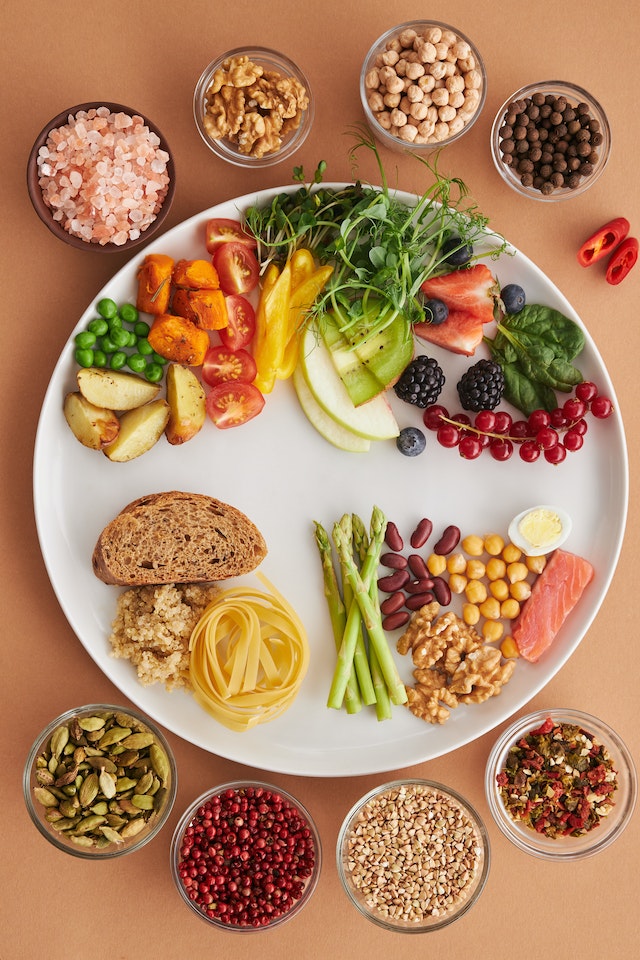
The pegan diet food list comprises products which may enable you to follow healthy and clean eating habits. Here are the foods that you may consume while following this type of diet.
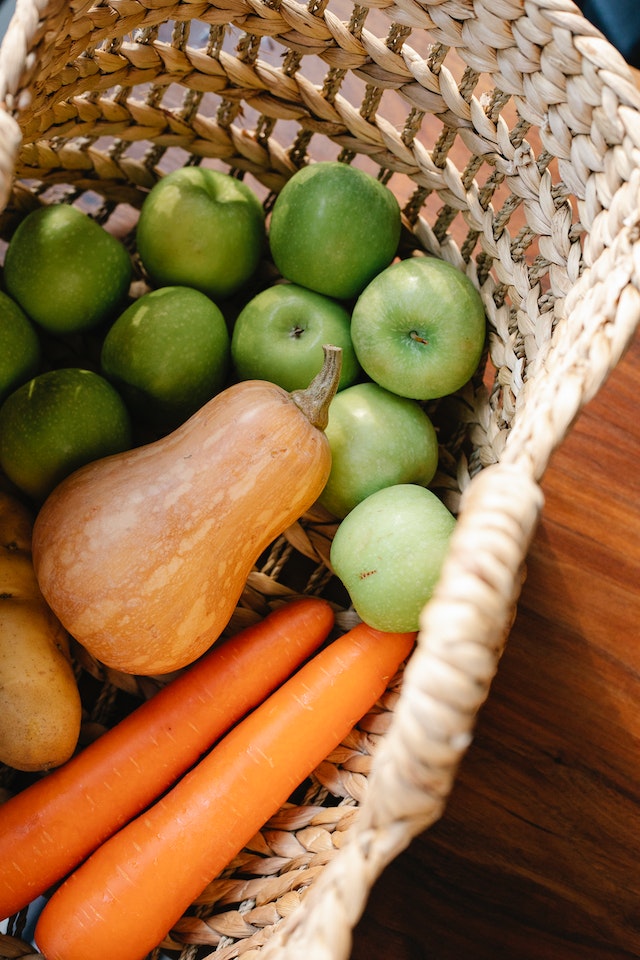
The primary food group that you may consume while being on this diet is vegetables and fruits as they should make up 75% of your total food intake. According to research, consuming a good amount of vegetables and fruits can supply your body with essential vitamins, minerals, and phytochemicals which may act as anti-inflammatory and antioxidant agents. Vegetables and fruits also provide dietary fiber which may lower the risks of cardiovascular disease and obesity (5).
- Sustainably Sourced Animal Proteins

While you may consume animal meat and proteins in a pegan diet plan, it is important to ensure that you consume it as a condiment (for flavoring or as a side) and not as a main course. Another pivotal factor to consider is that the animal product you are consuming needs to be organic, sustainably sourced, or grass-fed. Hence, unlike a vegan lifestyle, you may eat eggs, chicken, beef, and pork in moderation. You may also eat fish that are low in mercury such as wild salmon, herring, cod, and sardines.
Our contributor Dr. Elena Salagean, Medical doctor and allergy consultant – ‘Holistic Allergy’, lays down the points telling how consuming organic, grass fed animal meat is better than general meat in terms of rearing, use of chemicals and type of feed. She says, “Grass fed meat has been shown in various studies to be more nutritious in terms of higher levels of omega 3 fatty acids and lower levels of pro-inflammatory omega 3 acids. Overall, this helps our heart health. It should also have fewer chemicals and hormones as organic/ grass fed meat is raised without the use of synthetic chemicals, antibiotics, and growth hormones. On an animal welfare level, the grass fed and organic farming practices tend to have a better track record at prioritizing the welfare of the animals over intensive farming practices, as they will have more space to roam and access to a natural diet.”
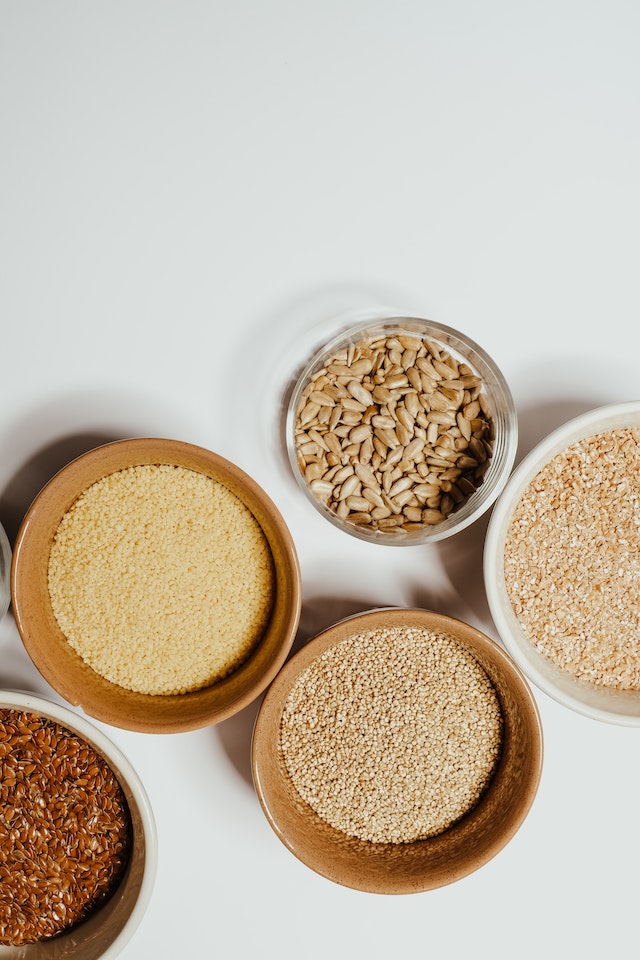
Due to their gluten content, whole grains and legumes are usually not recommended in the pegan diet (6). However, you may eat these whole grains and legumes sparingly in limited quantities. While on this diet, your grain intake needs to be half a cup (125 grams) or below that per meal. The legume intake needs to be one cup (75 grams) or below that per day. Preference is given to black rice and quinoa over other grains.
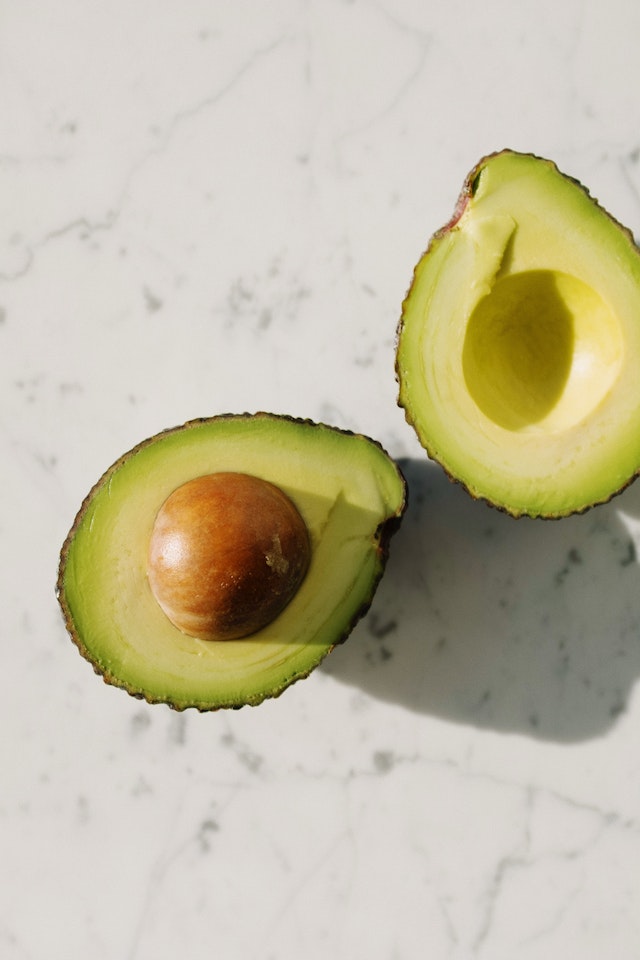
Avocado or avocado oil, coconut or coconut oil, omega-3 fatty acids from fish, saturated fats from grass-fed animal meats, and olive oil are some forms of healthy fat that you may consume while following this diet. However, remember to eat saturated fats in limited quantities as they may have an unfavorable impact on your cardiovascular health (7).
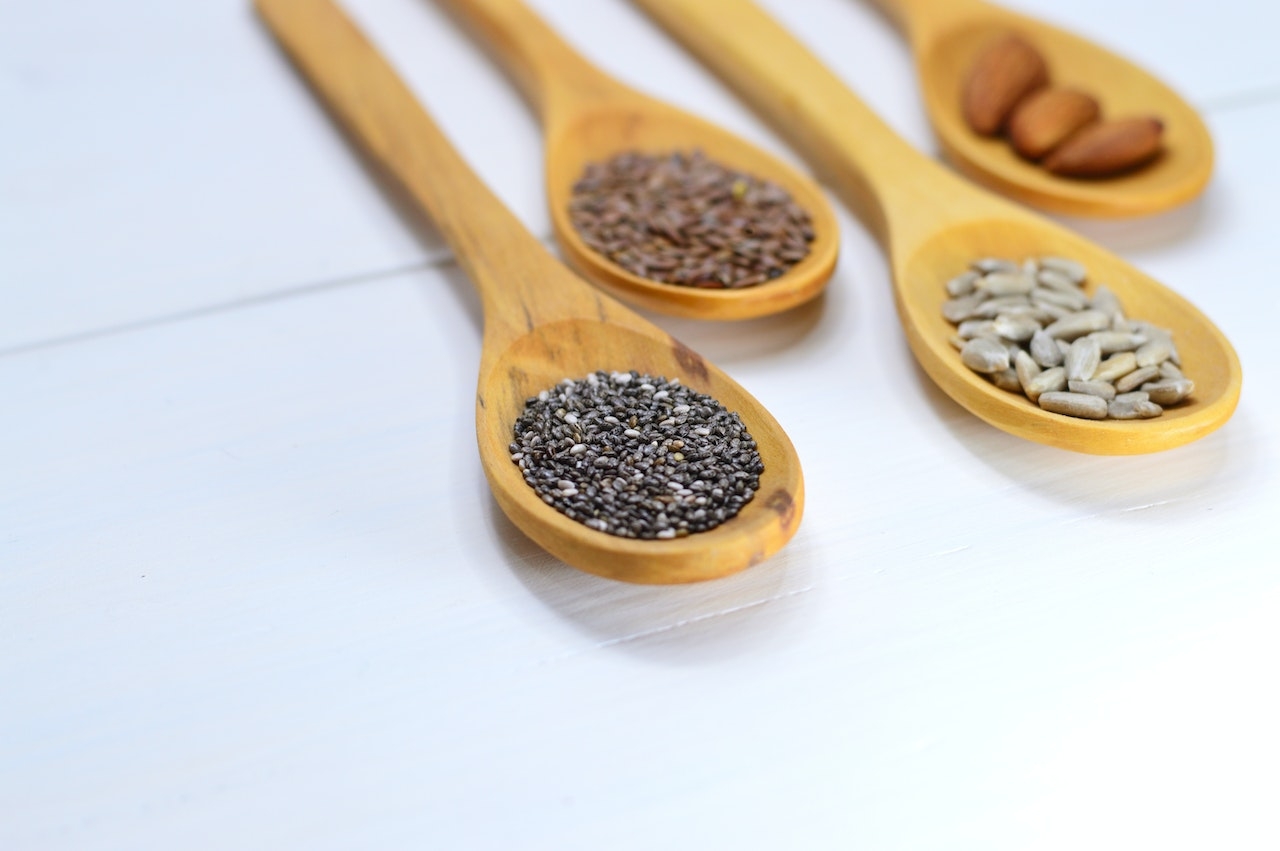
Although nuts and seeds are high in calories, they have multiple health benefits. They are packed with healthy fats, protein, vitamins, minerals, carotenoids, and fibers that may have potential antioxidant effects on your body and reduce the risk of chronic diseases (8). You may eat any type of nuts (except peanuts as they are technically classified as legumes), chia seeds, flax seeds, and hemp seeds.
What Should You Leave Out?

The pegan food list recommends avoiding products that contain gluten or dairy in some form. Along with this, it is also important to avoid or limit the consumption of processed foods. Ahead, we have put together everything you may avoid eating while following this diet plan.
- Dairy Products: Milk, cheese, yogurt, and butter
- Gluten: Bread, wraps, pita bread, pasta, baked goods, cereals, granola
- Sugar: Syrups, table sugar, artificial sweeteners, desserts
- Refined Oils: Soybean oil, sunflower oil, corn oil, canola oil
- Food Additives: Artificial colorings, preservatives, flavorings
- High Mercury-containing Fish: Swordfish, tuna, king mackerel
While avoiding these certain foods, it is also important to ensure that the products that you are consuming are not treated with pesticides or antibiotics, or genetically modified foods (GMOs).
Health Benefits of the Pegan Diet

Since the Dr. Hyman pegan diet is packed with nutrient-dense fruits and vegetables, fewer types of meat, and no processed foods, it may have multiple, distinct benefits for your body and overall health. Here are some key advantages of following this diet:
- May Improve Your Gut Health
According to studies, the pegan diet may have a positive impact on improving gut health. The collaborative research states that the protective effect of this diet may be linked to its favorable impact on the composition of the gut microbiome. Also, since this diet leads to the consumption of multiple plant-based foods, it may provide the body with prebiotics which are essential to feed the beneficial bacteria in your gut (1), (9).
- May Prevent Heart Problems
One of the most important benefits of a pegan diet is that it is associated with healthy cardiometabolic and cardiovascular biomarkers (1), (9). Since the diet plan encourages reduced intake of saturated fatty acids, it may help in decreasing the risks of cardiovascular diseases and also reduce cholesterol in your body (10). Instead, as this diet includes the consumption of unsaturated dietary fats and fruits, vegetables, nuts, and seeds, it may promote a healthy life and improve your heart health (11).
- May Help in Losing Weight
The pegan diet plan may help you in losing weight and enable you to drop a few pounds because firstly, it restricts you from eating processed foods like chips, bread, pasta, cereals, granola, baked goods, and more. Secondly, this diet plan also prevents the intake of sugar in your body which is associated with weight gain (12). Hence, these healthy eating habits may help you to lose weight.
- May Reduce Oxidative Stress And Lower Inflammation
Another health benefit of following a pegan diet meal plan is that it may help in reducing oxidative stress and lower inflammation in your body. This type of diet emphasizes the consumption of more vegetables and fruits. Studies state that vegetables and fruits are packed with essential nutrients and antioxidants and their intake may be associated with lower concentrations of systemic oxidative stress and inflammation (13).
The Potential Downsides of the Pegan Diet
While the pegan diet may have multiple benefits for your body and overall health, it also has certain disadvantages which you must be aware of. Ahead, we have put together the potential downsides of following this diet plan:
- May Be Expensive And Inaccessible
Since the pegan diet food list includes food items that are organic, nutrient-dense, sustainably sourced, or grass-fed; these options may be inaccessible for a lot of people to find and eat. Moreover, such foods may be expensive to purchase in the supermarkets. Hence, following this diet may not be pocket-friendly and cause a lack of variety in the meals due to inaccessibility.
- It Eliminates Dairy from Meals
Another downside of this eating lifestyle is that the hybrid food list of this diet eliminates all forms of dairy (yogurt, milk, cheese, etc.). Studies suggest consuming dairy products may help in meeting the nutrient requirements of the body, improve body composition, and may also provide protection against the most common chronic diseases (14). Further, the proteins in dairy may be beneficial for ensuring good cardiometabolic health as they may have a favorable impact on blood lipid, glucose control, and blood pressure (15). Hence, following this diet may deprive the body of essential nutrients and benefits which may be provided by dairy products.
- It May Be Restrictive And Lead to Eating Disorders
Although the pegan diet is much more flexible than a paleo diet or a vegan diet, it may be restrictive at times. Since this diet plan requires the elimination of items like processed or refined foods, starchy fruits and vegetables, dairy products, baked goods, sugar, beans, and more; it may feel difficult to continue due to the restrictions. Also, consuming meals regularly with a restriction may lead to eating disorders such as avoidant-restrictive food intake disorder (16), (17).
However, eating disorders are treatable. When discussed about the same, our contributor Dr. Elena Salagean says, “Eating disorders are treatable, but this tends to require a multidisciplinary approach. The best way to approach the management and the prognosis of the disorder is also case specific, so there are no universal rules in managing them.”
- You May Miss Out on the Benefits of Beans
This diet suggests avoiding beans in your meals. However, consuming beans regularly may have multiple health benefits for your body and overall health. According to research, eating beans may reduce the risks of obesity, promote a healthy immune system, fight inflammation, and improve cardiovascular function (18). Hence, by following this diet plan, you may be missing out on reaping the benefits of consuming beans.
The pegan diet combines the good principles of a paleo diet (eating whole foods which may have been gathered or hunted like fruits, vegetables, meat, and seafood) and veganism (eating only plant-based foods). This diet includes meals that are made with ingredients that are organic and sustainably sourced. Although you may consume a variety of veggies, fruits, seeds, nuts, lean meats, and more ? it might make you feel restricted. Being on the pegan diet means that you may not consume food items like dairy products, sugar, baked goods, and more. While this diet has multiple benefits for your health, it may also have some disadvantages. Therefore it is important to weigh in all factors and see if it is suitable for you before getting on the wagon.
Contributor: Dr. Elena Salagean, Medical consultant – Holistic Allergy Testing
ALSO READ: Decade Ender Special: Top 20 Indian food trends we witnessed in the 2010s
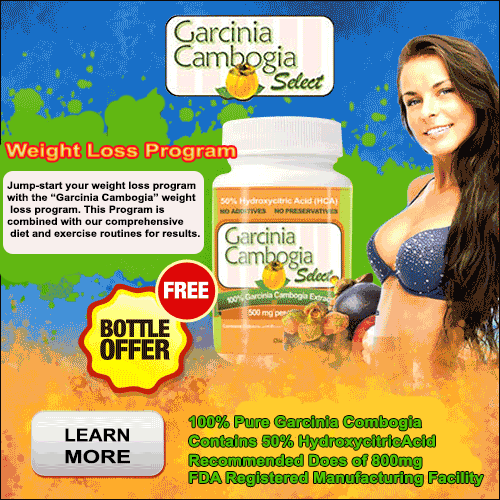
0 Comments
Post a Comment